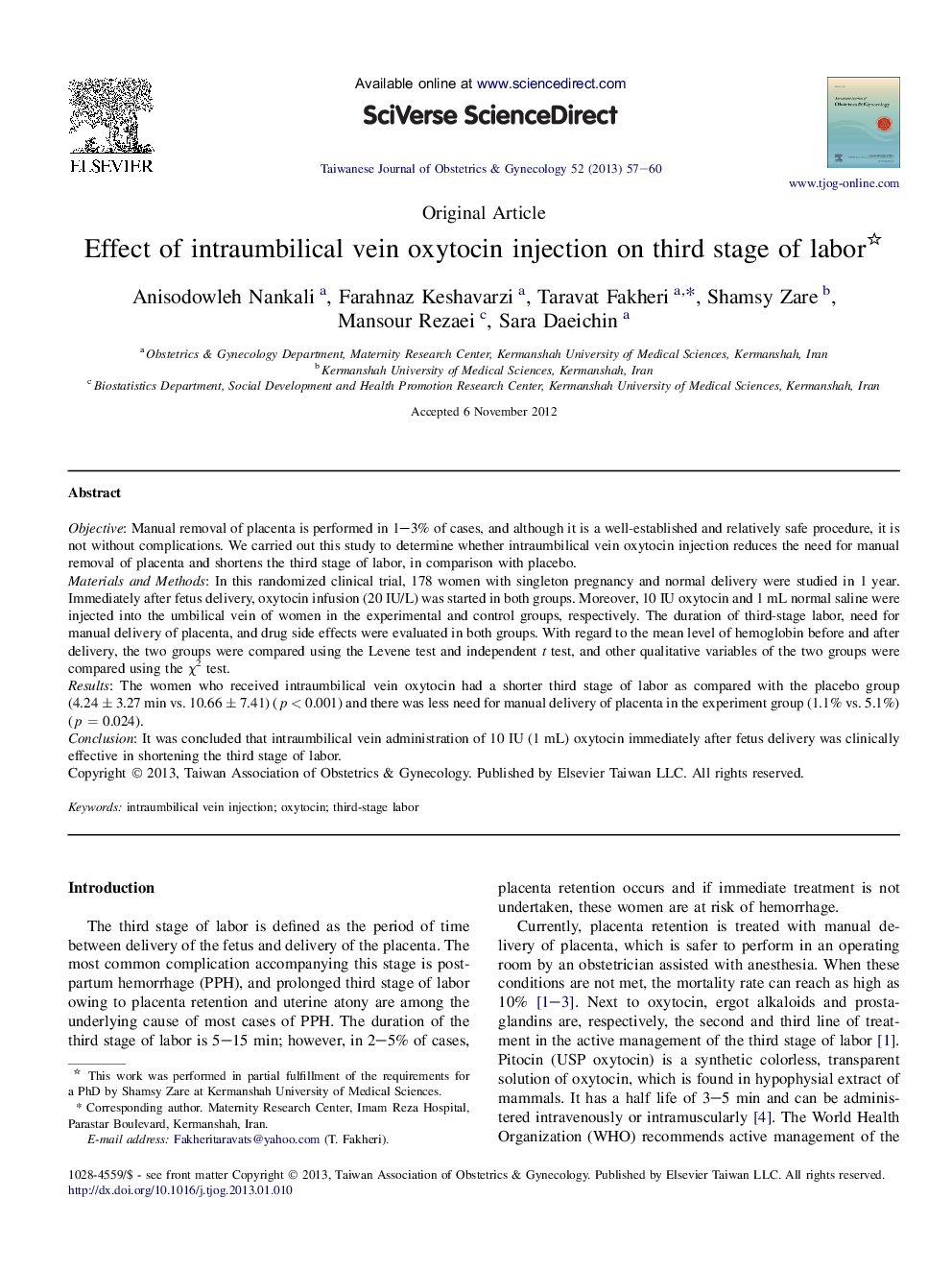| Article ID | Journal | Published Year | Pages | File Type |
|---|---|---|---|---|
| 3975607 | Taiwanese Journal of Obstetrics and Gynecology | 2013 | 4 Pages |
ObjectiveManual removal of placenta is performed in 1–3% of cases, and although it is a well-established and relatively safe procedure, it is not without complications. We carried out this study to determine whether intraumbilical vein oxytocin injection reduces the need for manual removal of placenta and shortens the third stage of labor, in comparison with placebo.Materials and MethodsIn this randomized clinical trial, 178 women with singleton pregnancy and normal delivery were studied in 1 year. Immediately after fetus delivery, oxytocin infusion (20 IU/L) was started in both groups. Moreover, 10 IU oxytocin and 1 mL normal saline were injected into the umbilical vein of women in the experimental and control groups, respectively. The duration of third-stage labor, need for manual delivery of placenta, and drug side effects were evaluated in both groups. With regard to the mean level of hemoglobin before and after delivery, the two groups were compared using the Levene test and independent t test, and other qualitative variables of the two groups were compared using the χ2 test.ResultsThe women who received intraumbilical vein oxytocin had a shorter third stage of labor as compared with the placebo group (4.24 ± 3.27 min vs. 10.66 ± 7.41) (p < 0.001) and there was less need for manual delivery of placenta in the experiment group (1.1% vs. 5.1%) (p = 0.024).ConclusionIt was concluded that intraumbilical vein administration of 10 IU (1 mL) oxytocin immediately after fetus delivery was clinically effective in shortening the third stage of labor.
